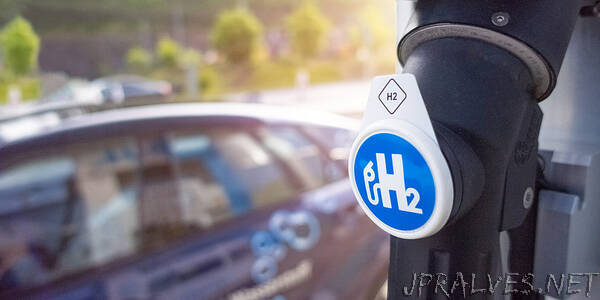
“In addition to electric vehicles, hydrogen-powered vehicles are also seen as an alternative to conventionally powered vehicles. However, an increase in the number of such cars with fuel cells (fuel cell electric vehicles — FCEVs) would also result in completely new hazard scenarios, especially in tunnels. In the HyTRA project, Graz University of Technology (TU Graz) has investigated what types of incidents involving hydrogen-powered vehicles in tunnels are realistic, what dangers arise for people and the tunnel structure, and what measures can be taken to minimise these risks. The project was funded by the Austrian Research Promotion Agency (FFG), the Federal Ministry for Climate Protection, Environment, Energy, Mobility, Innovation and Technology (BMK) and ASFINAG.
Low probability of occurrence, high damage potential
There is virtually no empirical data on real accidents involving hydrogen-powered vehicles in tunnels due to their low traffic share to date. Therefore, only a rough estimate of the probability of occurrence could be made based on experience with gas-powered vehicles, which indicated a low probability. In comparison, the potential extent of damage was analysed in great detail on the basis of experiments from the EU HyTunnel-CS project, which ended in 2022. Due to the high energy density of hydrogen and the high pressure at which it is stored, FCEVs have a very high damage potential.
According to the current standard, hydrogen is stored in cars at a pressure of 700 bar and in lorries and buses at 350 bar. If damage occurs to a tank, a great deal of energy is quickly released; if hydrogen catches fire, it burns at temperatures of over 2000 degrees Celsius. Although the tanks are very robust and well protected against mechanical impact, they cannot withstand a rear-end collision with a lorry. This scenario should therefore be avoided as far as possible.
Three hazard scenarios
The most likely outcome of an accident involving an FCEV is that there will be no significant impact from the hydrogen. However, three different hazard scenarios can occur in the event of serious accidents. In the first case, the thermal pressure relief device (TPRD) is triggered when the pressure rises as a result of a thermal impact (e.g. vehicle fire), releasing the hydrogen from the tank in a controlled jet. This keeps the pressure at a certain level and prevents the tank from rupturing. If the discharged hydrogen ignites — which can easily happen when mixed with air -, the flame is directed towards the ground. Nevertheless, it remains dangerous because hydrogen burns without colour or odour, but the danger zone is limited. If the TPRD fails, the tank can explode, creating a blast wave that spreads through the entire tunnel. Up to approx. 30 metres there is a risk of death, up to approx. 300 metres there is a risk of serious internal injuries such as bleeding to the lungs, and further away there is still a risk of ruptured eardrums.
The third scenario is the least likely. It occurs when the hydrogen is released without being ignited. As the lightest element in the periodic table, hydrogen rises and collects in a cloud under the tunnel ceiling. If there is an ignition source there (e.g. hot lamps or an electrical impulse starting a fan), a hydrogen cloud explosion follows, which also causes a blast wave.
Less speed and sufficient distance
“Our investigations have shown that although the hazard scenarios involving hydrogen vehicles are relatively unlikely, they harbour great potential for damage. Modern hydrogen tanks are built so safely that a lot has to go wrong for the hydrogen to escape,” says Daniel Fruhwirt from the Institute of Thermodynamics and Sustainable Propulsion Systems. “In addition, the transport infrastructure in Austrian tunnels probably fulfils the strictest requirements in Europe. Since we only have one operator for all motorway and highway tunnels, the safety level is also very homogeneous. In terms of infrastructure, there is hardly any risk of damage to the tunnel structure, but accidents would be dangerous for people.”
To minimise the risks, Daniel Fruhwirt and his project team have recommended several measures. Stricter speed limits that are monitored with section control, precise distance controls that signal to drivers when they are following too closely, and speed limits that are displayed earlier in traffic jams so that the speed is already low enough when arriving at the end of the jam to cause only minor damage in the event of a rear-end collision. “What has already been implemented in most EU member states as a result of the serious events at the end of the 1990s and early 2000s, is that all tunnels on motorways and highways with a length of more than 500 metres are twin-tube tunnels and are generally no longer used for bi-directional traffic. This reduces the risk considerably,” explains Daniel Fruhwirt.”
